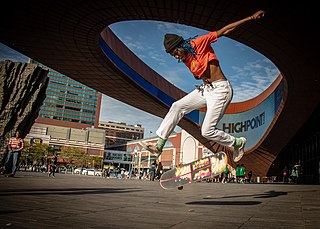
Skateboarding is an action sport that involves riding and performing tricks using a skateboard, as well as a recreational activity, an art form, an entertainment industry job, and a method of transportation. Originating in the United States, skateboarding has been shaped and influenced by many skateboarders throughout the years. A 2009 report found that the skateboarding market is worth an estimated $4.8 billion in annual revenue, with 11.08 million active skateboarders in the world. In 2016, it was announced that skateboarding would be represented at the 2020 Summer Olympics in Tokyo, for both male and female teams.

Anthony Frank Hawk, nicknamed Birdman, is an American retired professional skateboarder, entrepreneur and the owner of the skateboard company Birdhouse. A pioneer of modern vertical skateboarding, Hawk completed the first documented "900" skateboarding trick in 1999. He also licensed a skateboarding video game series named after him published by Activision that same year. He retired from competing professionally in 2003 and is regarded as one of the most influential skateboarders of all time.

Steve Caballero is an American professional skateboarder. He is known for the difficult tricks and air variations he invented for vertical skating and for setting the long-standing record for the highest air achieved on a halfpipe. In 1999, Thrasher Magazine named Caballero the "Skater of the Century".

Carlsbad is a coastal city in the North County region of San Diego County, California, United States. The city is 87 miles (140 km) south of downtown Los Angeles and 35 miles (56 km) north of downtown San Diego. As of the 2020 census, the population of the city was 114,746. Carlsbad is a popular tourist destination and home to many businesses in the golf industry.

A skatepark, or skate park, is a purpose-built recreational environment made for skateboarding, BMX, scootering, wheelchairs, and aggressive inline skating. A skatepark may contain half-pipes, handrails, funboxes, vert ramps, stairsets, quarter pipes, ledges, spine transfers, pyramids, banked ramps, full pipes, pools, bowls, snake runs, and any number of other objects.
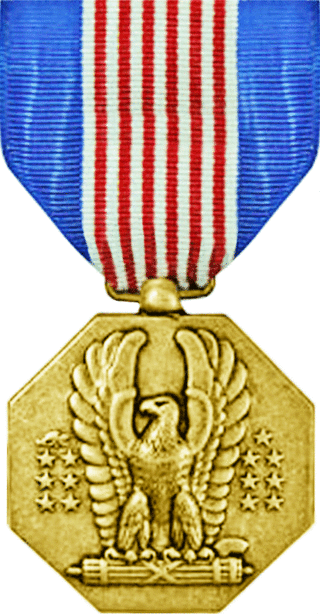
The Soldier's Medal is an individual decoration of the United States Army. It was introduced as Section 11 of the Air Corps Act, passed by the Congress of the United States on July 2, 1926. The Soldier's Medal is equivalent to the Navy and Marine Corps Medal, the Air and Space Forces' Airman's Medal, and the Coast Guard Medal. Prior to the creation of the Airman's Medal in 1960, airmen were awarded the Soldier's Medal.
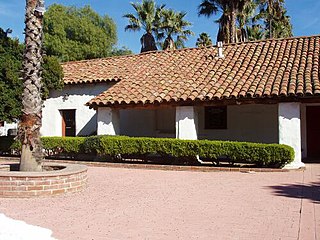
The San Antonio de Pala Asistencia, or the "Pala Mission", was founded on June 13, 1816 as an asistencia or "sub-mission" to Mission San Luis Rey de Francia, some twenty miles inland upstream from the latter mission on the San Luis Rey River. Pala Mission was part of the Spanish missions, asistencias, and estancias system in Las Californias—Alta California. Today it is located in the Pala Indian Reservation located in northern San Diego County, with the official name of Mission San Antonio de Pala. It is the only historic mission facility still serving a Mission Indian tribe.

The Luiseño or Payómkawichum are an indigenous people of California who, at the time of the first contacts with the Spanish in the 16th century, inhabited the coastal area of southern California, ranging 50 miles (80 km) from the present-day southern part of Los Angeles County to the northern part of San Diego County, and inland 30 miles (48 km). In the Luiseño language, the people call themselves Payómkawichum, meaning "People of the West." After the establishment of Mission San Luis Rey de Francia, "the Payómkawichum began to be called San Luiseños, and later, just Luiseños by Spanish missionaries due to their proximity to this San Luis Rey mission.
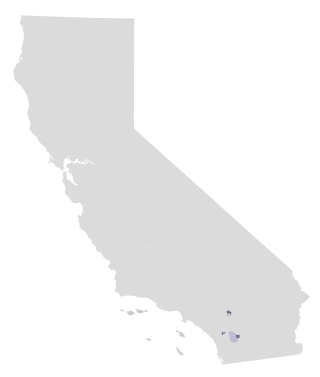
The Cupeño are a Native American tribe of Southern California.

Mission Indians are the indigenous peoples of California who lived in Southern California and were forcibly relocated from their traditional dwellings, villages, and homelands to live and work at 15 Franciscan missions in Southern California and the Asistencias and Estancias established between 1796 and 1823 in the Las Californias Province of the Viceroyalty of New Spain.

The Pala Indian Reservation is located in the middle of San Luis Rey River Valley in northern San Diego County, California, east of the community of Fallbrook, and has been assigned feature ID 272502.
Pauma Valley is a geographic valley and unincorporated community between Valley Center and Palomar Mountain in San Diego County, California. The name also refers to the agricultural region comprising citrus and avocado groves, and the location of several Indian Reservations, a country club, and tribal casinos.
KPRI is a community radio station licensed to serve the community of Pala, California, United States. The station is owned by the Pala Band of Mission Indians. The station began operating under program test authority in December 2010 and received its broadcast license on February 3, 2011.
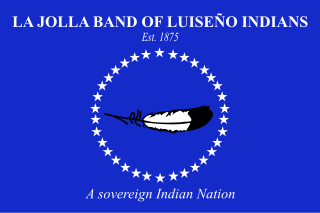
The La Jolla Band of Luiseño Indians are a federally recognized tribe of Luiseño Indians, located in northern San Diego County, California, United States. There are five other federally recognized tribes of Luiseño in southern California. La Jolla has four Tribally Owned Enterprises, The La Jolla Trading Post, The La Jolla Trading Post Casino, The Zip Zoom Zipline, and The La Jolla Indian Campground.
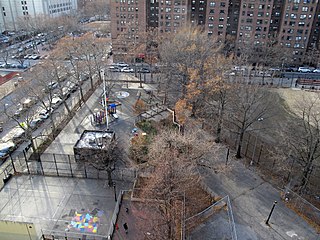
Coleman Playground is a public park on the border between the Chinatown and Lower East Side neighborhoods of Manhattan in New York City.

Andy Kessler Skatepark formerly Riverside Skatepark is a skatepark located in Riverside Park on the Upper West Side of Manhattan, New York City. Riverside Skatepark is notable as the first full-sized public skatepark in Manhattan, designed and built by renowned skateboarder and skatepark builder Andy Kessler.
The Wounded Knee 4-Directions Toby Eagle Bull Memorial Skatepark, also known as the Toby Eagle Bull Memorial Wounded Knee Four Directions Skate Park & the WK4-Directions TEB Memorial Skatepark, is a concrete skatepark located in Pine Ridge, South Dakota, United States, on the Pine Ridge Indian Reservation. Completed in 2011 by the local community with help from skateboarding organizations, the skatepark features a spectrum of skate obstacles and is dedicated to a young Lakota skater who died in a car accident: Toby Eagle Bull. The WK4D TOB Memorial Skatepark is located in the Youth Opportunity, or "YO," park, adjacent to the Oglala Lakota Nation powwow grounds, a picnic area, a playground, a basketball court as well as a baseball field.
James Murphy is an American skateboarder, writer, artist, skateboard company owner, and skateboarding activist.

Cindy Whitehead is an American professional skateboarder and activist. A pioneer of vertical skateboarding, she was inducted into the Skateboarding Hall of Fame in 2016. She is married to photographer Ian R. Logan.















